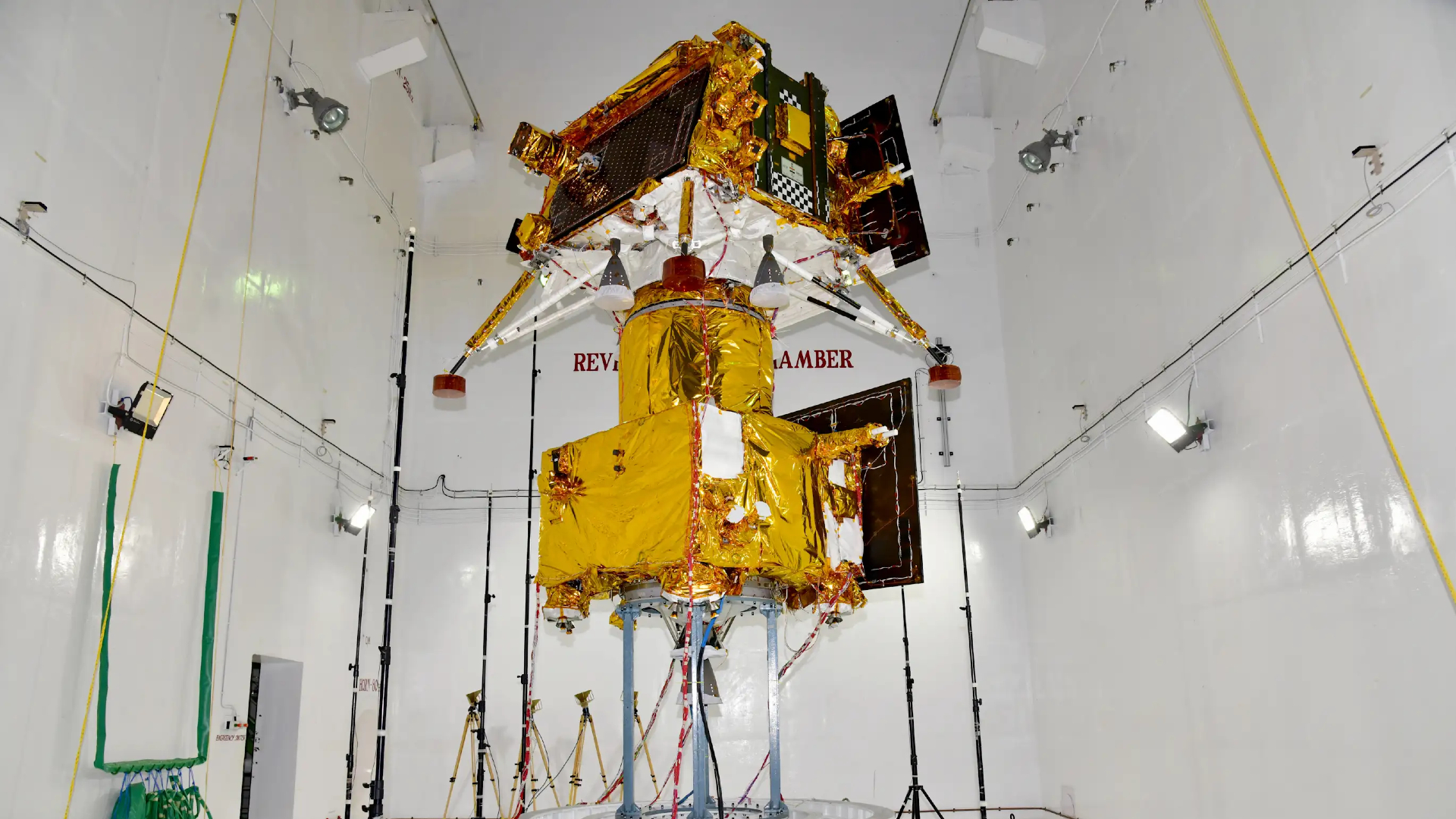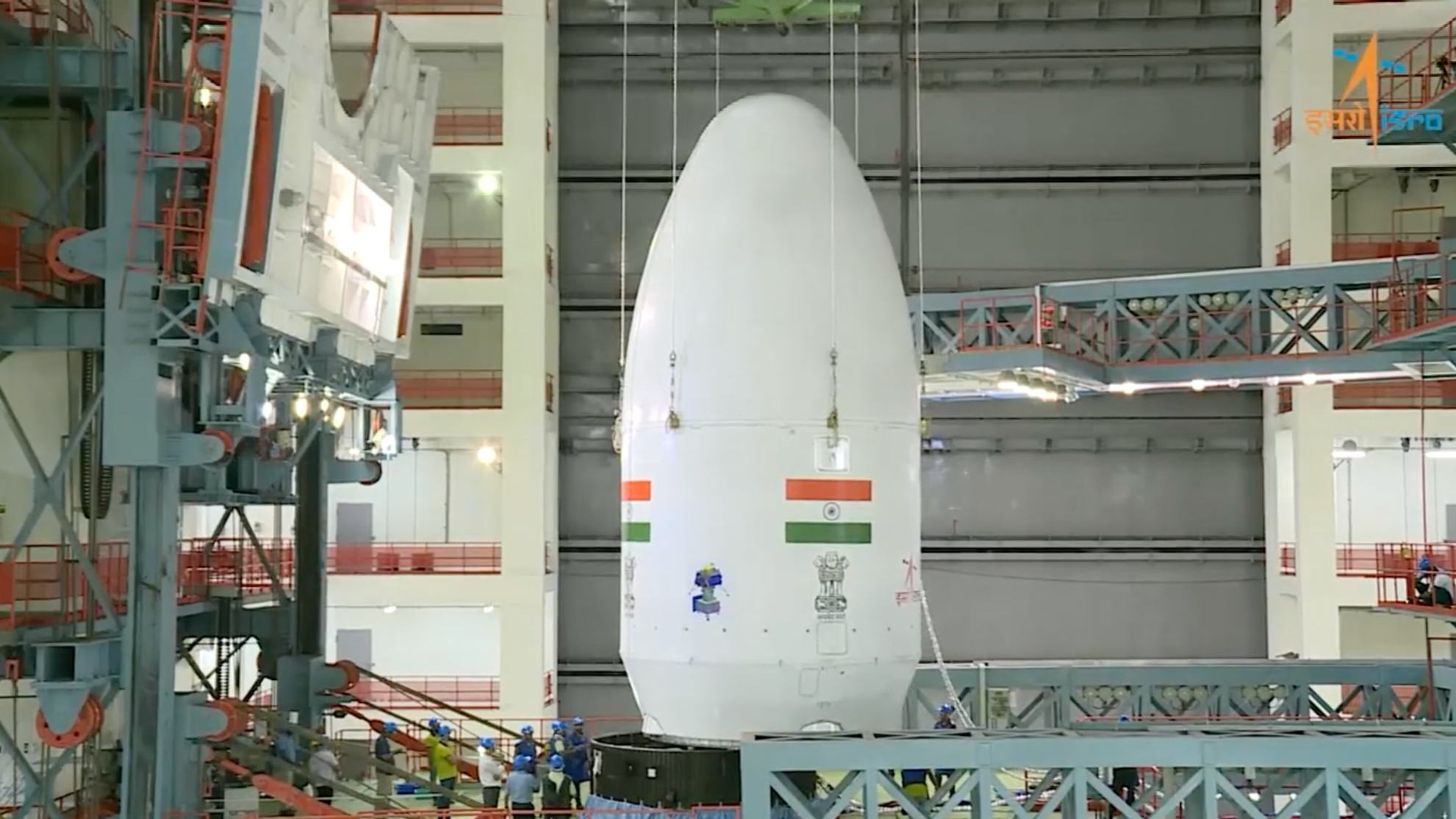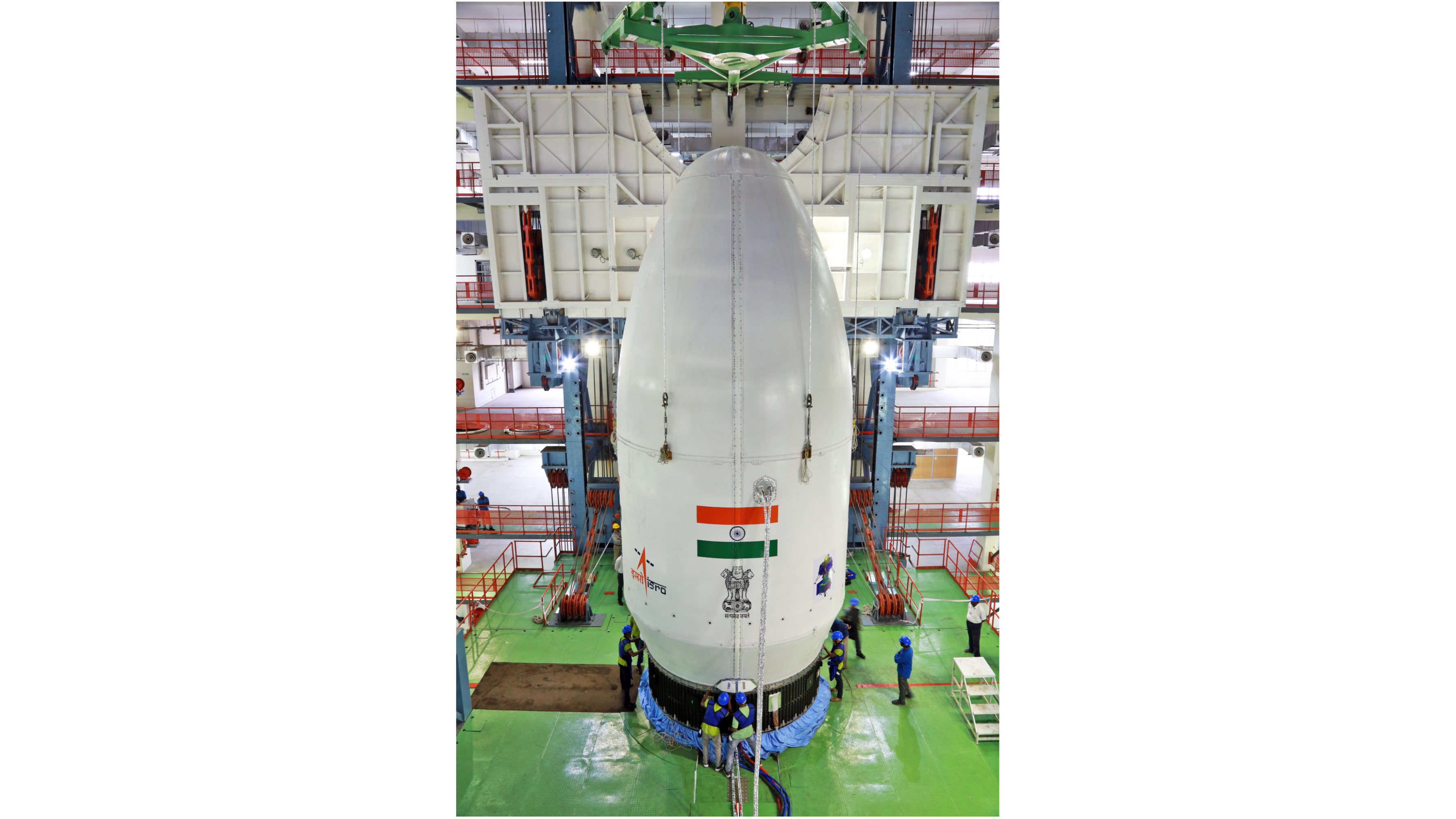July 14: India has successfully launched the Chandrayaan 3 mission to the moon. Read our full launch recap.
India is getting its next moon mission ready for liftoff.
The robotic lunar lander and rover that make up the Chandrayaan 3 mission were stacked atop their Launch Vehicle Mark-3 (LVM3) rocket at the Satish Dhawan Space Centre on Wednesday (July 5), according to the Indian Space Research Organisation (ISRO), which posted photos and a video of the process on Twitter Wednesday morning.
If all goes according to plan, Chandrayaan 3 will launch from Satish Dhawan in the early morning hours of July 14.
Related: The moon: Everything you need to know about Earth's companion

As its name suggests, the upcoming mission is the third in India's Chandrayaan program of lunar exploration.
Chandrayaan 1, which launched in October 2008, sent a moon orbiter aloft in India's first-ever deep-space effort. The orbiter carried a 64-pound (29 kilograms) impactor probe that slammed hard (but intentionally) into the lunar surface near the south pole.
Get the Space.com Newsletter
Breaking space news, the latest updates on rocket launches, skywatching events and more!
The impactor detected water ice just before it crashed, a discovery matched by a NASA instrument aboard the Chandrayaan 1 orbiter called the Moon Mineralogy Mapper.
Chandrayaan 2 launched an orbiter, lander and rover toward the moon in July 2019. The orbiter arrived safely and continues to study the moon today with its suite of eight science instruments. But the lander-rover duo crashed during their touchdown attempt, a failure apparently related to its braking thrusters.


India will take another crack at a moon landing on Chandrayaan 3. Indeed, that's the primary focus: The new mission carries a lander and rover but no orbiter.
The two surface craft carry six science instruments between them, which they'll use to gather a variety of data over the course of one lunar day (about 14 Earth days). The mission's propulsion module is also equipped with an instrument that will characterize Earth from afar, with the goal of informing future searches for potentially life-supporting exoplanets.
Chandrayaan 3 aims "to demonstrate end-to-end capability in safe landing and roving on the lunar surface," ISRO officials wrote in a mission description. Success would be huge for the nation. To date, just three entities have successfully soft-landed a craft on the moon — the governments of the Soviet Union, the U.S. and China.
Editor's note: This story was updated at 3:50 p.m. EDT on July 6 with the new Chandrayaan 3 target launch date of July 14. ISRO had been targeting July 13 for the liftoff.
Join our Space Forums to keep talking space on the latest missions, night sky and more! And if you have a news tip, correction or comment, let us know at: community@space.com.

Michael Wall is a Senior Space Writer with Space.com and joined the team in 2010. He primarily covers exoplanets, spaceflight and military space, but has been known to dabble in the space art beat. His book about the search for alien life, "Out There," was published on Nov. 13, 2018. Before becoming a science writer, Michael worked as a herpetologist and wildlife biologist. He has a Ph.D. in evolutionary biology from the University of Sydney, Australia, a bachelor's degree from the University of Arizona, and a graduate certificate in science writing from the University of California, Santa Cruz. To find out what his latest project is, you can follow Michael on Twitter.
-
DrRaviSharma Thoughts and Best wishes - On Chandrayaan 3Reply
Major observations
1.
Please refer to my analysis of Chandrayaan 2 Mission.
https://lnkd.in/dUTpHehD2.
In that Op-Ed article I had suggested the following:
India will need to soft land often and even be able to take off from the lunar surface to fulfill its ambitious goals for human space exploration and sample returns.
Only one week after the Vikram mishap, I submitted a proposal online for the launch of another lander that would serve as a follow-up mission to Chandrayaan-2. Called Chandrayaan-2A, the mission would demonstrate a soft landing using a lunar lander with optional ascent capabilities that would allow the spacecraft to "hop" on the moon.
3.
To my knowledge hopping capability is not discussed yet by ISRO.
It is necessary capability for future exploration and must be tried in future missions if not in Chandrayaan 3 landing module.
4.
In collaboration with another observer, we found that there is a strong image based evidence that Vikram Lander is still intact even though it has left debris during violent descent, Since the south pole coordinates require grazing solar angles and have shadows it was hard to get submeter images from the only high resolution imagery source namely NASA LRO. So I requested and received a few more images where more analysis is required to be done to consistently verify Vikram Lander standing as a whole.
5.
There is an opportunity with recent lunar orbiters from (Japan / Korea?) to obtain high resolution imagery to verify this.
6.
Last but not the least, why did not ISRO try Radioisotope thermal generator on this mission to provide nighttime power capabilities rather than staying on the most conservative option of waking up the Lander at Lunar Sunrise?
I tried to provide these inputs but did not succeed in breaking the former colleagues firewall!
In spite of these suggestions not being followed, there is a silver line as teams have done very thorough testing and qualification and simulations and Lander will in all likelihood succeed this time.
Best wishes and also best wishes for finally starting through Artemis Accord a NASA linked Human Spaceflight program - similar to that I proposed to then ISRO Chair in 1975 (25 page document in ISRO library) relating to Space Shuttle and the Space Station and ISRO participation, that were overlooked.
Best wishes for a successful landing on Moon. ISRO, India and we all need it.
Ravi
(Dr. Ravi Sharma, Ph.D. USA)
NASA Apollo Achievement Award
ISRO Distinguished Service Award
Former Scientist NASA HQ and
Former Scientific Secretary ISRO HQ
Ontolog Board of Trustees
Particle and Space Physics
Senior Enterprise Architect
How India's moon crash wasn't really a failure (op-ed)space.com • 16 min read








